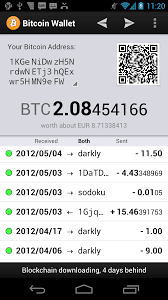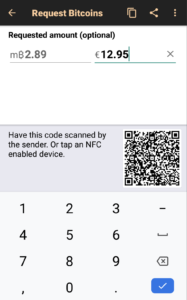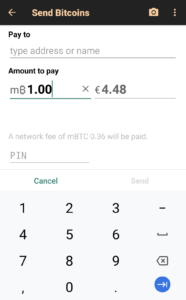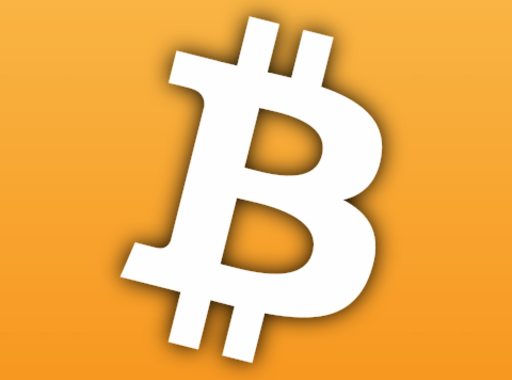1. One of Bitcoin’s Oldest Android Wallets

Forget big-name exchange wallets or shiny new phone apps: the Schildbach Wallet has been around since the Bitcoin Stone Age (okay, more like 2011). Created by Andreas Schildbach—this software was among the first to let Android users store and spend BTC on the go, no fuss, no complicated sign-ups.
- Over 5 Million Downloads: That’s not small potatoes.
- Focused on Bitcoin Only: No altcoins, tokens, or next-gen blockchains—just BTC.
- Maintained by the Community: Despite being started by a single dev, it’s open-source, so the Bitcoin community helps keep it alive.
Basically, if you’re looking for an old-school wallet that’s all about Bitcoin, with zero corporate bloat, this is it.
2. Simple Yet Quirky: How Schildbach Wallet Operates
2.1 Mobile Payments, Old-School Style
The core mission: make spending BTC easy on a phone. You can scan QR codes, generate them for incoming payments, or even use NFC to transmit the transaction data if you’re face-to-face with someone. No extra sign-up, no email addresses—this is about as close to a “walk up and pay” experience as crypto can get.
2.2 No Full Registration Required
Plenty of modern wallets force you to jump through hoops—like setting up accounts, verifying emails, or handing over personal data. Schildbach? Nah. You just install it, open it, and you’re good to go. That’s the beauty of open-source, non-custodial software.
2.3 Privacy and Security: Good, but Not Perfect
- No Mandatory Account: Great for privacy.
- Spending PIN: You can set a PIN to confirm outgoing transactions, but the app doesn’t force you to password-protect the entire interface.
- Limited Key Export: You can’t directly copy your private keys in a standard format. Instead, you have to rely on the wallet’s backup file.
Real talk: Ifyou’re planning to store boatloads of BTC, a mobile wallet (including Schildbach) may not be your best bet. This thing was built for everyday transactions, not for stacking large amounts of Bitcoin you’re never planning to move. For that, a hardware wallet or more robust solution is probably safer.
3. Backups and Restores: The Good, the Bad, and the Annoying

3.1 Unique BackupFile Format
Most modern wallets spit out a 12- or 24-word seed phrase (mnemonic). Schildbach, however, does not. Instead, it encrypts your private keys in a single file:
bitcoin-wallet-backup-yyyy-mm-dd-hh-mm
The date and time keep it organized, which is nice. But here’s the catch: that file only works with the Schildbach wallet. You can’t just import it into a random Bitcoin app like Electrum or Bitcoin Core. If you want to switch, you’d have to restore in Schildbach, then send your BTC to another wallet.
3.2 Creating a Backup
- Tap the three dots in the app → Safety → Backup Wallet.
- It’ll ask for a password to encrypt the backup file. Use something strong—numbers, symbols, the works.
- Save multiple copies in safe places (offline and separate). You can even stash an encrypted copy in the cloud, provided your password is bulletproof.
3.3 Restoring a Backup
- Tap those three dots again → Safety → Restore Wallet.
- Select your backup file from internal storage, cloud, or wherever you parked it.
- Enter the encryption password. Boom, your wallet should reload.
But if your backup was made using some super old version of the app, newer versions might choke on it because the format changed. In that case, you might have to decrypt the file manually and salvage the private keys. We’llget to that in a sec.
4. Lost Your PIN or Password? Here’s the Score

4.1 Chill, Don’t Panic
You’d be surprised howmany people find or remember their password once they calm down. Check old notebooks, text files, maybe that weird corner of your closet you never clean.
4.2 Manual Attempts
If it’s just a PIN, list every possible combination you used for other apps, and systematically try them. Keep an exclusion list so you’re not repeating attempts. One small slip could mean locking yourself out for good if you typed something incorrectly.
4.3 Brute-Forcing the Backup
If you can’t open the backup file because you forgot the encryption password, you might consider specialized tools that run password permutations. This can be very technical. If it’s beyond your comfort zone, calling in a professional crypto recovery service might be your best shot. They’ll do advanced keyword or partial-guess attacks to find your passphrase.
5. Exporting Private Keys: Easier Said Than Done

Let’s say the Schildbach Wallet is driving you bonkers: maybe it hangs during sync, or you just want a more flexible wallet. In theory, you could export the raw keys from that backup file. But it’s not built into the user interface—there’s no “show me my seed phrase” button. You’d have to decrypt or parse the file using specialized software.
If you’re tech-savvy and comfortable in the command line, it’s doable. If not, you risk messing up the file. That’s where a wallet recovery pro can step in, decrypt the backup, and hand you your private keys so you can move your BTC somewhere else.
6. Schildbach Wallet Challenges
6.1 Sync Problems
Because Schildbach downloads the blockchain data (in a simplified form, but still), your phone may get stuck syncing. If the wallet never finishes, you can’t confirm payments. One workaround: export your keys (or get a recovery specialist to help) and import them into a wallet that’s actually finishing its sync.
6.2 Backup Compatibility
Old backups might not play nice with the latest release. If you see an error about incompatible versions, you’ll need to decrypt that file or find an older build of the app.
6.3 Lost or Stolen Phone
If your phone is gone, but you have the backup file, you’re still in business. Restore to a new device, optionally move the funds to a fresh wallet so nobody can misuse your old phone if they figure out your PIN.
7. Why Professional Help Sometimes Saves You a Massive Headache
Sure, you could try every guess under the sun, fiddle with backup decryption tools, or go line by line in GitHub code. But if you’re not into the DIY route, or you’re dealing with big Bitcoin balances, you might want an expert who does wallet recoveries. A good service like btchelp.org will:
- Analyze your backup file or locked device.
- Run specialized brute force or partial password guessing software.
- Keep your data confidential (signed NDAs and so on).
- Help you fix any file corruption or weird version mismatches.
8. Final Word: A Piece of Bitcoin History with a Schildbach Wallet
The Schildbach Wallet has earned its legendary status in Bitcoin’s timeline. It’s simple, open-source, and no-frills—and that’s exactly why some love it. But that old-school approach also means certain modern conveniences (like seed phrases you can easily import anywhere) just aren’t there.
So if you’re rocking an old Schildbach backup file, or you’re stuck with a forgotten PIN, remember:
- Stay calm.
- Try your best to recall or brute force your passcodes.
- Make backups of anything you still have so you don’t lose it for good.
- Call in the cavalry (a recovery expert like btchelp.org) if all else fails.
Look, you don’t want to lose your precious BTC over a random password glitch in an old Android app. The shield (Schildbach) might not be as fancy as modern wallet solutions, but it still does the job—just keep those backups safe and that PIN in a spot you won’t forget. If you’re past that point, don’t sweat: wallet recovery services exist for a reason. Happy hunting, and may the crypto gods smile upon your private keys.
Want more details? Head over to our blog for advanced tips and insights about recovering bitcoin wallets.

Leave a Reply